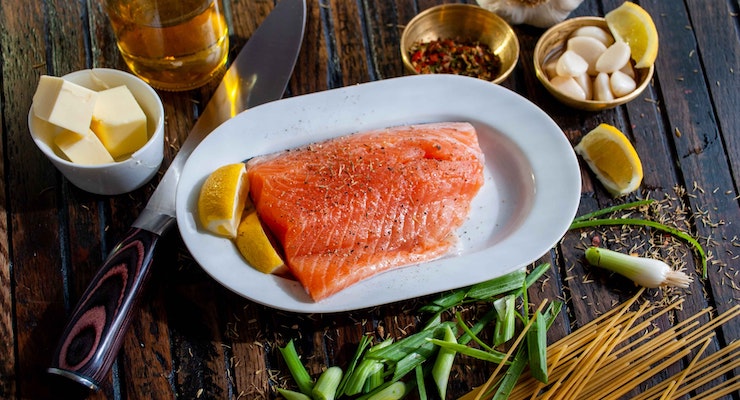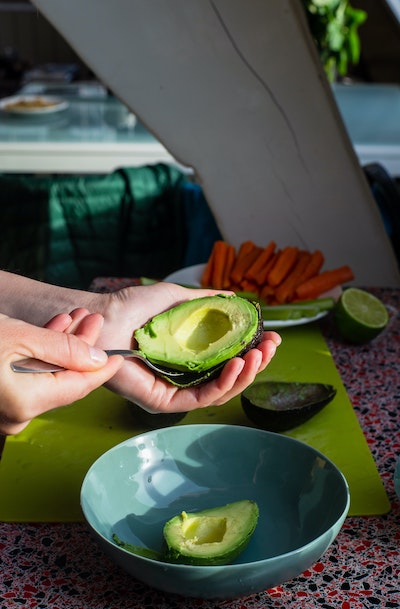
The paleo diet is based on the idea that humans from thousands of years ago were presumed healthier because they ate off the land as hunters and gatherers. Followers of this diet believe that eating a whole foods diet reduces or eliminates the risk of many contemporary lifestyle diseases like heart disease, diabetes, and obesity. (We’d remiss not to point out that there are opposing views to almost any diet. Obviously it’s recommended to talk to your doctor before trying a diet change.)
History of the Paleo Diet
The paleo diet gets its name from the time that ranged from 2.5 million to 10,000 years ago; it is based on what our Paleolithic ancestors ate. Also known as the Caveman Diet, this prescribed way of eating was first touted in the 1970s by Walter Voegtlin, a gastroenterologist. He believed modern man could learn something about how to eat healthy from our ancestors.
Dr. S. Boyd Eaton from Emory University wrote the book “The Paleolithic Prescription,” arguing that the human body is not designed to eat a modern diet. The book promotes the idea that many contemporary diseases can be prevented by eating like the cavemen ate.
What Can You Eat on the Paleo Diet

The big question on everyone’s mind is: What can I eat on a paleo diet? The good news is that this diet includes a wide variety of food. Most meats qualify except for highly processed meats like pepperoni and hot dogs.
Eggs, fresh vegetables, fruits, nuts, seeds, and healthy oils are menu basics. Starchy vegetables like potatoes and squash are not recommended because of the nutritional value relative to the carb and sugar content.
This diet promotes fats versus carbs with the belief that your body responds well to fats but does not process carbs. Recommended oils and fats are coconut oil, avocado oil, Ghee, olive oil, and macadamia oil.
While fruits are certainly a part of the paleo diet, they should be limited due to the high sugar content if you are trying to lose weight. No more than three servings of fruit a day are recommended. Some fruits that are considered particularly paleo-friendly are apples, oranges, blackberries, peaches, mangos, blueberries, lemons, limes, figs, strawberries, and peaches.
Foods You Should Eliminate or Limit on the Paleo Diet
The list of foods that you should eliminate from your diet can be summed up in a short list.
- Dairy
- Cereal Grains
- Fruit Juice
- Deli-meats
- Starchy Vegetables
- Sugar
- Salty Foods
- Processed Oils
- Legumes
- Grain-related Seeds
- Condiments from the Store
Grain-Free Flour Options
If you’re worried about never indulging in some of your favorite dishes once you start on this diet, there is some good news. There are several grain-free and gluten-free options so that you can make paleo pancakes and other treats. Granted, I doubt cavemen ate pancakes or brownies for obvious reasons, but that does not mean you can’t make it work with the right paleo recipe.
Below is a list of flours you could use as substitutes in your favorite recipes.
- Almond Flour
- Coconut Flour
- Tiger Nut Flour
- Green Banana Flour
- Cassava Flour
One of the easiest flours to find and use is almond flour. You can use this in almost any recipe to make bread, cookies, and cake. For example, if a recipe calls for one cup of flour, then you simply substitute one cup of almond flour to transform your treat into something that is paleo-friendly.
Tips for Staying on the Paleo Diet While Traveling
One of the most difficult challenges to staying on any diet is how to manage what you eat once you leave your kitchen. While car trips certainly give you the option to pack a cooler with paleo food, it is harder to enter the world of airport security and travel.
Many travelers simply take the bread off their sandwich or leave the macaroni side dish uneaten. Once you leave the airport, eating gets easier while traveling. Any restaurant with salads is a safe bet. While chain restaurants aren’t always as exciting, you know what to expect.

Sylvia Browder is CEO of Specialty Home Services LLC, a Home Improvement Company; a Small Business Consultant at Browder Consulting Group, a startup consultancy firm to help women with startup assistance, marketing, website and graphic design work and other support services. In addition, she has co-authored several published books; publisher of ‘Sylvia Browder’s Blog for Women Entrepreneurs’ a lifestyle blog; and publisher of ShopSpendBlack.com Business Directory & Blog platform created to help consumers find black owned businesses in a searchable format. In her spare time, she enjoys spending time with her husband of 30 years; 5 adult children and 5 grandchildren; church; friends and motorcycle riding.
















